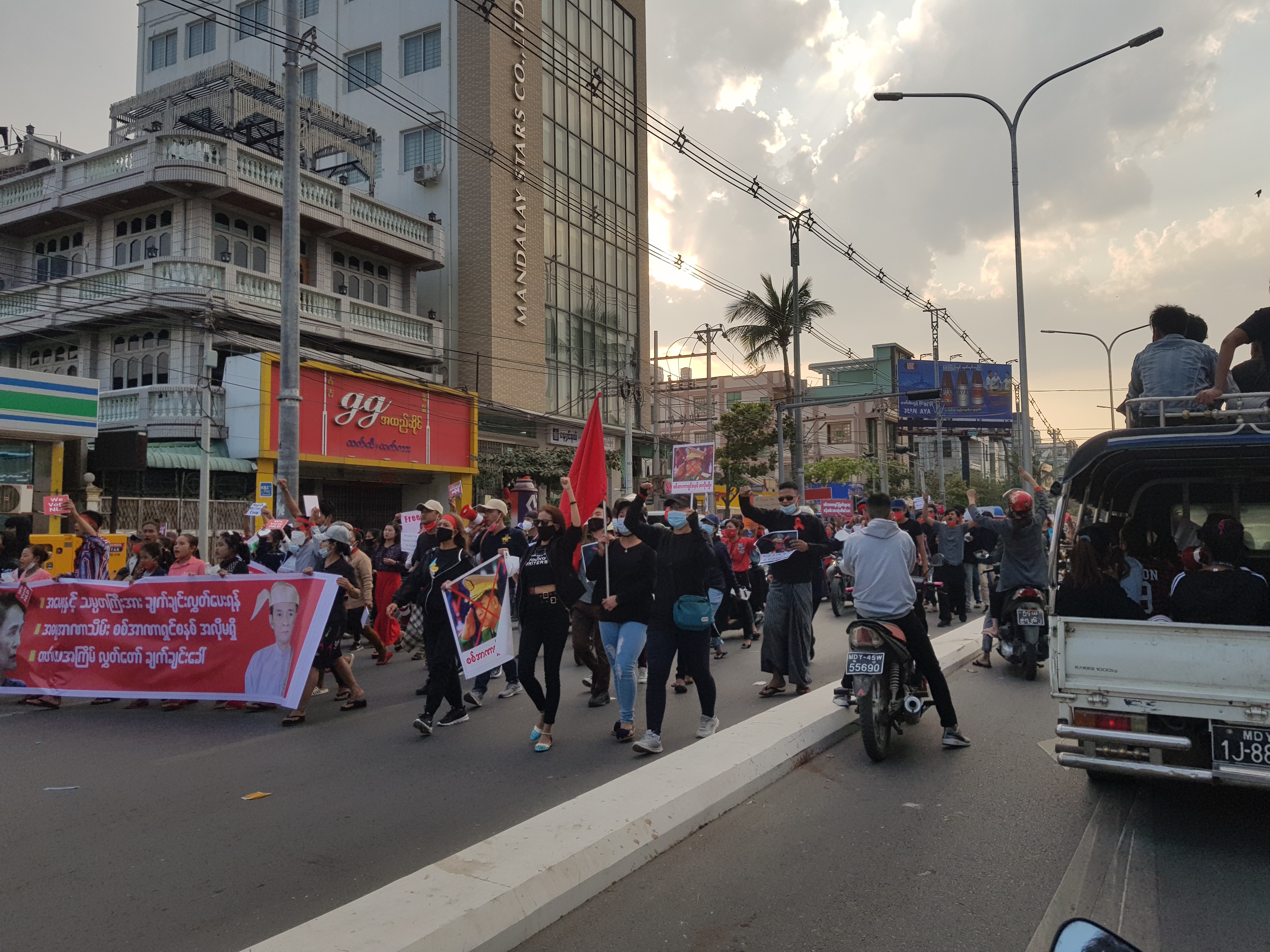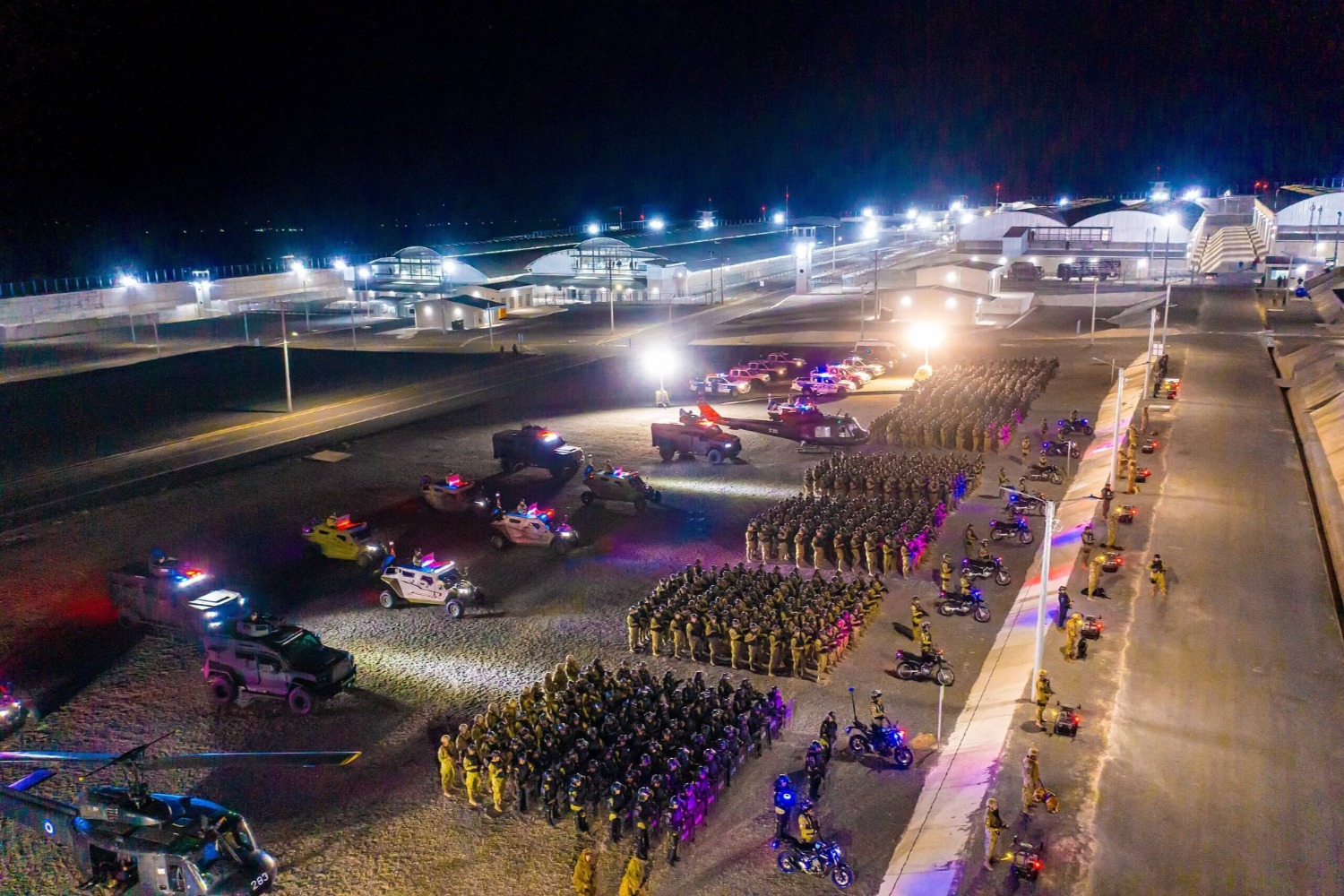The Geopolitics of Politics and Protest: Myanmar, China and the U.S.
Myanmar was not only the first foreign policy surprise for President Biden, but it is also likely to remain a revealing test for the administration. Given China’s role in Myanmar, how can and should the U.S. respond?

Published by The Lawfare Institute
in Cooperation With

The U.S.-China relationship is fraught with challenges and shot through with uncertainty. As last week’s summit between Secretary of State Antony Blinken, National Security Adviser Jake Sullivan and their Chinese counterparts underscored, the relationship between the two countries will be defined on a number of fronts, ranging from trade, climate and norms governing technological transfer to human rights abuses, threats to financial stability and an inquiry into the onset of the coronavirus pandemic. Yet one situation is presenting a conundrum that few anticipated: the coup in Myanmar, where the domestic protest movement strengthens, the risk of economic collapse heightens and the threat of drastic escalation persists.
It is a challenge unlikely to disappear anytime soon.
Myanmar was not only the first foreign policy surprise for President Biden, but it is also likely to be a revealing test for the new administration’s strategic posture—underscoring the possibilities and difficulties of reengagement in a part of the world where narrow visions of sovereignty prevail amid a growing fervor for democratic change.
Just a few years ago this democratic change still felt inexorable, not only in the region but also across the globe. President Obama lifted long-standing sanctions as Myanmar’s democratic transition gathered momentum. The opening up of the country appeared a success story for American engagement in the world. By 2018, though, this story ceased to be a romance. The persecution and mass exodus of the Rohingya led to a new round of targeted sanctions against the top brass of Myanmar’s military, the Tatmadaw. The transition grew tinged with tragedy—one that suggested more continuity than change with the country’s past of state-sponsored violence and cruelty against minority groups.
Now, both the Tatmadaw and those opposed to its rule are in a war of attrition. The military assumes that protests will taper as it uses brutality to incite fear and bets on society’s imminent need to return to work. The protesters involved in the Civil Disobedience Movement think they can make the Tatmadaw’s rule untenable at a quicker rate, by grinding both the state and the economy to a halt. As attrition gives way to desperation, further crackdowns and escalating civil conflict are likely. Myanmar’s future hangs in the balance. In a world where late-stage liberal triumphalism has given way to a redux of realism, is it still reasonable to think that the international community can help to tip the scale?
China possesses more leverage than any other international player. It is nevertheless far from all-powerful: It is hedging its bets, waiting to see how events unfold and trying to remain the party that all sides need. Understanding this position can help the U.S. to better calibrate its own response.
Both the military-led and the National League for Democracy (NLD)-led governments have an uneven history with their imposing neighbor. Contrary to the nonsensical claims of recent weeks, where the junta’s spin masters are claiming the coup as a way to counterbalance China, the Tatmadaw needs China’s support for the economy, its backing alongside Russia at the U.N. and its help if the Tatmadaw continues efforts to bring some ethnic armed organizations to the negotiating table. The military will need support, in other words, to buy some bare minimum of legitimacy among constituencies it has long punished into submission.
The NLD-led government turned to China in 2017, after facing the international community’s condemnation for the military’s heinous persecution of the Rohingya. The Chinese government subsequently led protracted negotiations between Bangladesh and Myanmar. If the NLD-dominated Committee Representing Pyidaungsu Hluttaw (CRPH)—the committee of deposed parliamentarians leading the opposition government—seeks a brokered settlement, it will also need China to help tip the balance in its favor and to ensure support from the ethnic armed organizations as they maintain a united front against the Tatmadaw.
Sustained rapprochement with China nevertheless seems unlikely in any scenario. The Myanmar military first ceded some of its power after 2011 to hedge against China’s swelling influence in the country. Once the NLD took office, Myanmar’s relationship of necessity proved no less uneasy. While a broad program of economic cooperation was agreed upon during the NLD’s term of government, a renegotiation drastically scaled down China’s most significant project in the country: a deep-sea port at Kyaukphyu. The NLD also evaded resumption of the Myitsone dam, an investment first agreed and then suspended by previous military-led governments after mass protest. Myanmar’s economic future relies on China but, if past is precedent, the country’s elite are unified behind one thing: This future will not be dictated by Chinese interests. Most recently, for instance, the NLD continued to hedge its bets by accepting India’s coronavirus vaccine instead of China’s.
Myanmar will almost invariably work to maintain strategic balance, even if the junta remains and the country’s elite are entirely isolated from the West. Instead of running to China, the regime might maintain cooperation with the Indian military, with those Association of Southeast Asian Nations (ASEAN) governments ambivalent about democracy, and by fomenting competition among a cacophony of East Asian nationalisms—Japan and Korea invested heavily in the country and are unlikely to permanently withdraw from the country lest they lose out entirely. The military’s strategic patience makes the next weeks all the more essential.
Politics, though, is not an elite sport—and while the next weeks are vital, the rules of the game are forged over long stretches of time. In the clash of attitudes, expectations and entrenched interests, it is most important to note that Myanmar’s population is particularly wary (and weary) of Chinese influence. The country, for instance, is increasingly a safe-haven for China’s illicit industries. Over the past decade, Myanmar turned into one of the world’s largest hubs for methamphetamine production. This industry is a breeding ground for transnational Chinese syndicates, a revenue stream for various parties to the conflicts in Myanmar and a source of social unrest as addiction spiked along with the growing trade. Border-town casinos are meanwhile transforming into “smart cities” fully separate from the Myanmar monetary system. Chinese interests are also evangelizing their intertwined notions of development and governance in the country’s largest cities, facilitating a massive surveillance system in Mandalay and pushing for a New Yangon City to house a swelling urban population. China’s development model is a strategic export; demand, though, is nascent, and popular resistance to any form of heavy-handed rule remains resolute across Myanmar. Since the coup, this popular skepticism has turned into speculation and fear-mongering about China’s role in supporting the military, leaving their interests in ever-more doubt. This doubt reached a fever-pitch when two Chinese-owned garment factories were burned earlier this month amid a military crackdown in Yangon’s poorest outskirts.
China, meanwhile, saw its interests grow during Myanmar’s decade-long reform. It relies on Myanmar for crucial imports, ranging from luxury jade and gems to supply chain essentials like copper, tin and rare earth metals. Many of these transactions are run through off-the-books trade, or are a legacy of bad deals signed by cash-starved military regimes of the past. Myanmar, though, is not only an input for China’s economy—it is also becoming a significant conduit for other needs. Once the Kyaukphyu port is complete, the existing oil and gas pipelines will provide a way for imported energy to bypass the strategic chokepoint in the Strait of Malacca, along with other imports that will travel on a corresponding railway to Kunming.
It is unlikely that China will tolerate a failed state along its border, particularly one with growing strategic significance. Will it, though, accept the old status quo of cease-fire capitalism if the military faces more opposition than ever before? Will China consider the junta—long an unreliable business partner—capable of stabilizing its interests? And is the Chinese Communist Party more likely to embolden a democratic movement as it tries to stomp out others across the region?
China’s role and response is critical as the U.S. examines its own policy options. Given China’s interests, the increased diversification of the Tatmadaw’s vital international connections over the past decade and the further erosion of the military’s sources of popular legitimacy, what can the U.S. and its allies do?
Many commentators warn against repeating the sanctions of the past, rightfully noting that the military is capable of evading their strongest effects while the general populace suffers. Acute economic pain for the people, though, is likely inherent in the military’s rule. A long-fragile banking system is on the edge of collapse. Foreign investment and trade are almost certain to decrease, leaving the economy more dependent on sectors already dominated by the military. And, as protesters are saying, the prospect of sustained military rule is the most intolerable of all; the indignities and incompetence of their regime will exacerbate the economic pain caused by the coup.
While the costs of economic warfare too often accrue to those it is ostensibly meant to protect, this moment calls for solidarity. Myanmar’s multitude of interests and infighting are temporarily reconfigured into the military and the vast majority of the country opposed to its rule. This opposition needs to be supported and kept together—helping to direct any further sanctions toward the Tatmadaw’s strategic interests and away from the people. A multilateral and multifaceted strategy—one that can be a partnership between the protesters, the U.S. government and regional allies—is necessary for achieving this. This approach can, in turn, capitalize on China’s precarious position.
America’s role begins with four steps. First, congressional legislation should require the Department of State to explore how it can support the deposed parliamentarians representing the CRPH. Legislation recently passed in the House calls on the State Department to report on the ways in which the U.S. can engage with ASEAN to support a return to democracy; this policy, though, should explicitly support those Myanmar actors who are leading the movement to restore democracy in the country. Such assistance might include providing control over frozen assets to the opposition government, allowing economic aid to funnel to vulnerable groups as the military’s economic interests are targeted. Second, the U.S. government should facilitate and protect dialogue between different groups opposed to the military’s rule, particularly those representing the Rohingya, Kachin, Shan, Karen and other targeted minorities. Third, the United States can use leverage generated by domestic boycotts to push ASEAN, Japan, South Korea and India into a stronger and sustained refusal to recognize the junta. Finally, the administration should quietly coordinate with Chinese officials, using these steps in tandem with more forceful sanctions to underscore that the military’s sustained rule is the most destabilizing way forward for all parties.
If the Biden administration is serious about focusing on the Indo-Pacific, Myanmar is a decisive litmus test. If the U.S. is to advance dignity for the victims of the most heinous human rights abuses and take seriously the possibility of multilateralism in our shifting world, support for Myanmar’s democratic movement must be sustained. This is a unique chance to give content to rhetoric and to cast a cogent vision in an otherwise uncertain moment—only rarely do geopolitical goals align so neatly with the aims of a protest movement.
The fate of Myanmar will both shape and reveal much about ongoing transformations in the region. The country’s long-term future depends on many elements where the complex relationship between the U.S. and China is sure to play a formative role: the consequences of climate change, the fair distribution of the benefits of trade, the institutions that govern the rapid spread of information, and the seriousness of major powers to forge an international order committed to something beyond crude self-interest. This starts, though, with finding a way to bring the international community together—with a seriousness of purpose and sustained commitment—against the military’s attempt to hijack the country and to hold its people hostage. It starts with listening to, and standing alongside, Myanmar’s protesters.





